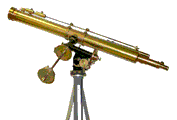Department of Physics and Astronomy: Publications and Other Research

M. Eugene Rudd Publications
Document Type
Article
Date of this Version
2001
Abstract
We have investigated ionization mechanisms in fast ion-atom collisions by measuring the low-energy electron emission cross sections in a pure three-body collision involving bare carbon ions (v=6.35 a.u.) colliding with atomic hydrogen targets. The measurements have also been extended to molecular hydrogen and helium targets. In this paper we provide the energy and angular distributions of double differential cross sections of low-energy electron emission for atomic hydrogen targets. The Slevin rf source with a high degree of dissociation was used to produce the atomic H target. It is found that the two-center effect has a major influence on the observed large forward-backward angular asymmetry. A detailed comparison is presented with calculations based on the continuum distorted-wave (CDW) and CDW-EIS (eikonal initial-state) approximations. Both the continuum distorted-wave calculations provide a very good understanding of the data, whereas the first Born calculation predicts almost symmetric forward-backward distributions that do not agree with the data. The two-center effect is slightly better represented by the CDW calculations compared to the CDW-EIS calculation. The total cross sections are, however, in good agreement with the theories used. The results for molecular hydrogen and helium will be discussed in the following paper.


Comments
Published in Physical Review A Volume 63, 2001. . Copyright © American Physical Society; used by permission.